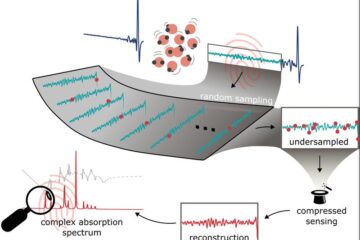ISU researchers help map first plant-parasitic nematode genome sequence

Now, Iowa State University researchers have contributed to the release of the annotated genome of one of the most destructive nematodes: Meloidogyne incognita — the southern root-knot nematode, as reported recently in the journal Nature Biotechnology.
Sequencing the genome is a critical step toward comprehensively understanding how the organism works and may pave the way for research on ways to fight the pest.
“This is considered to be one of, if not the most important plant-parasitic nematode species across the world,” said Thomas Baum, professor and chair of plant pathology and head of Iowa State University's contribution to the genome sequence project.
Root-knot nematodes are so important because they can be found almost anywhere in the world on almost any plant, he said. Nematodes are the most abundant animals on earth.
“Many of the nematodes that are really bad pathogens are very specialized on which plant they attack,” said Baum. “This nematode has a huge host range. For us nematologists, it is very interesting and challenging to study.”
Because the pest is so widespread, many nematologists around the world were eager to help with the project. The lead investigator was Pierre Abad of the Insitut National de Recherche Agronomiquea, a French research group, with help from researchers in Belgium, Holland, Great Britain, Switzerland, and Iowa State University and North Carolina State University in the US.
“Because it is such a worldwide problem, people are eager to contribute,” Baum said. “Also, because it is the first plant-parasitic nematode to have its sequence released, people are very excited about it.”
Chemical treatments for killing nematodes, called nematicides, are dangerous to humans and other animals so they've been restricted in use for decades. Technology for controlling nematodes has advanced little in the past three decades.
Besides being a devastating crop pathogen, Meloidogyne incognita has some remarkable biological adaptations that make it a fascinating organism to study.
Baum said that the sex of the tiny worms, or better the lack thereof is very intriguing. Only females reproduce and they do so without having sex, so it remains a puzzle why males of the species even exist. And since the females don't mate to reproduce, the offspring should be genetically identical to the mother — like a clone – but they aren't. And as the offspring matures into males or females, some start as females and then change into males.
Baum's group included postdoctoral researcher Tarek Hewezi and assistant scientist Tom Maier from Iowa State. The three worked on a specific part of the genome and performed manual annotations of genes. Professor Davis and postdoctoral research associate, Noureddine Hamamouch, used the current known parasitism genes to identify the full suite or predicted parasitism genes in the root-knot nematode genome.
With this sequencing done, Baum thinks researchers can now try to understand this nematode. He also cautions that finding ways to control this pest will be a long process.
“For any effort in which you want to control the nematode, this is a great resource,” Baum said. “But having the genome is only one of many steps in the right direction. Albeit, a very big one!”
Media Contact
More Information:
http://www.iastate.eduAll latest news from the category: Life Sciences and Chemistry
Articles and reports from the Life Sciences and chemistry area deal with applied and basic research into modern biology, chemistry and human medicine.
Valuable information can be found on a range of life sciences fields including bacteriology, biochemistry, bionics, bioinformatics, biophysics, biotechnology, genetics, geobotany, human biology, marine biology, microbiology, molecular biology, cellular biology, zoology, bioinorganic chemistry, microchemistry and environmental chemistry.
Newest articles

How evolution has optimised the magnetic sensor in birds
The magnetic sense of migratory birds is probably based on the protein cryptochrome 4, and a genetic study has now provided further support for this theory. A team of researchers…

Molecular Fingerprint Beyond the Nyquist Frequency
Ultrafast laser spectroscopy allows the ascertainment of dynamics over extremely short time scales, making it a very useful tool in many scientific and industrial applications. A major disadvantage is the…

High-energy-density aqueous battery based on halogen multi-electron transfer
Traditional non-aqueous lithium-ion batteries have a high energy density, but their safety is compromised due to the flammable organic electrolytes they utilize. Aqueous batteries use water as the solvent for…





















